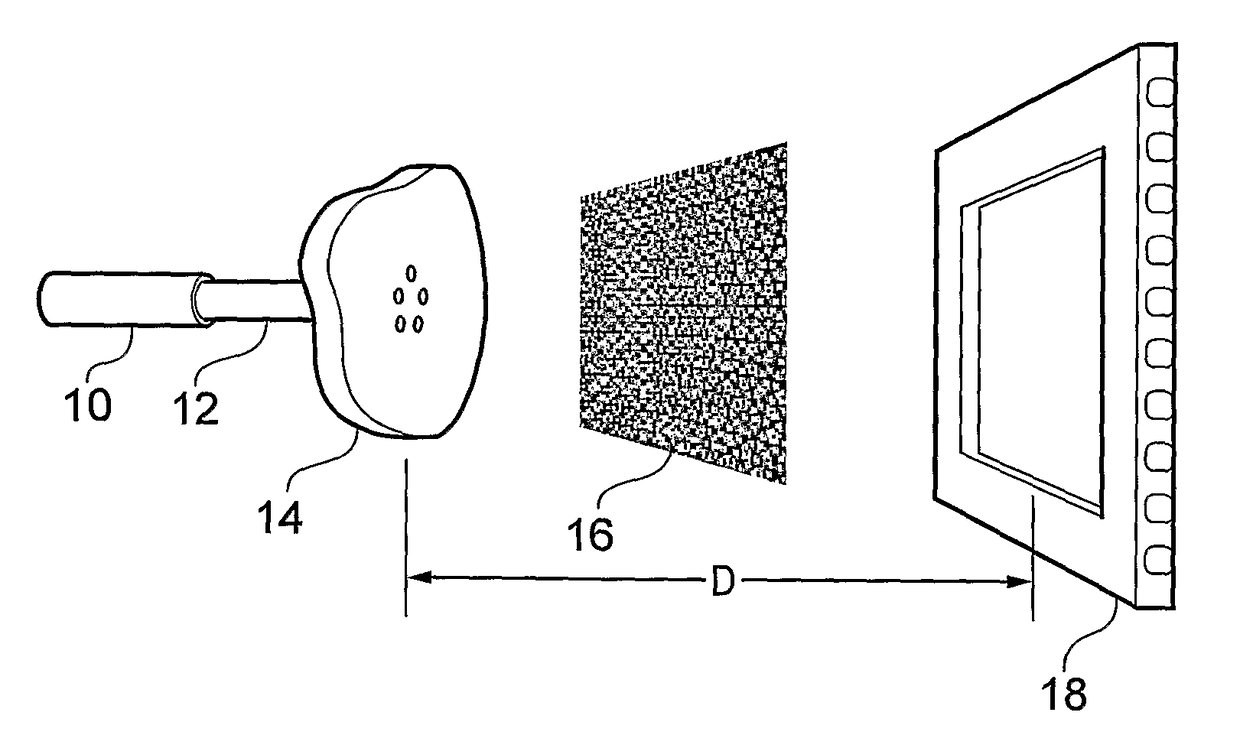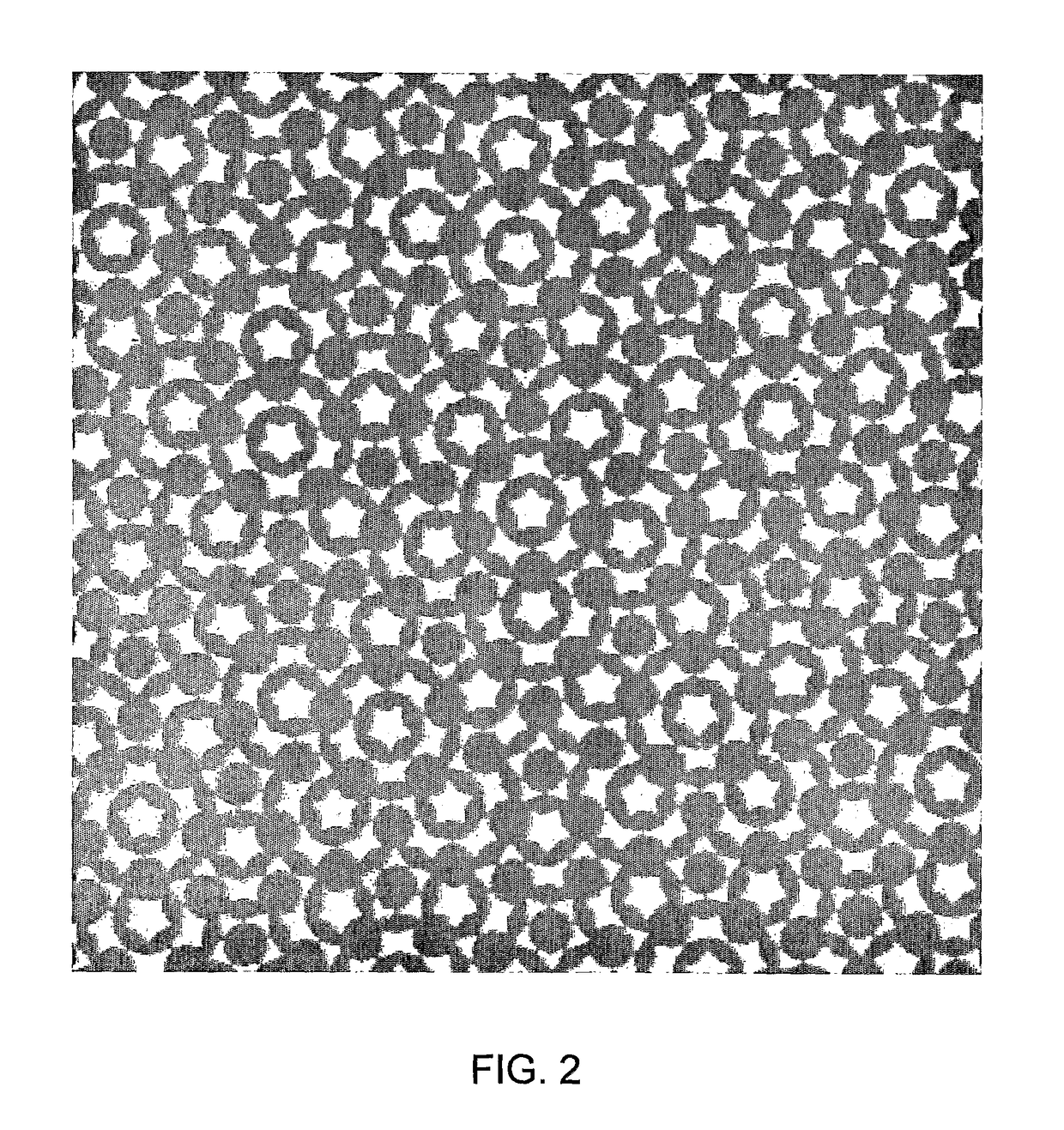Uses of electromagnetic interference patterns
a technology of electromagnetic interference and pattern, applied in the field of spatial metrology, can solve the problems of complex system, low accuracy of encoder, and inability to achieve the preciseness of the system, and achieve the effect of simple thermal management at the object location
- Summary
- Abstract
- Description
- Claims
- Application Information
AI Technical Summary
Benefits of technology
Problems solved by technology
Method used
Image
Examples
Embodiment Construction
[0182]The measurement of position is a very important task in modern technology. The preferred embodiments of the present invention permit position to be measured with extremely high precision at very low cost. The preferred embodiments provide physically small and highly configurable systems.
[0183]We first set out here in simple terms the way in which the system works, based on a notional example of an optical system consisting of a photographic projector and a screen. An image is projected onto the screen. Typically, the picture is slightly smaller than the screen. In a first case, the projector is head-on to the screen, so the image is “square” to the screen. In a second case, if the projector is moved closer to the screen, then the image gets smaller. Thus the size of the image on the screen is a measure of how far away the projector is from the screen. If the size of the image on the screen is measured, this allows the distance from the projector to the screen to be determined....
PUM
| Property | Measurement | Unit |
|---|---|---|
| wavelength | aaaaa | aaaaa |
| wavelengths | aaaaa | aaaaa |
| wavelengths | aaaaa | aaaaa |
Abstract
Description
Claims
Application Information
 Login to View More
Login to View More - R&D
- Intellectual Property
- Life Sciences
- Materials
- Tech Scout
- Unparalleled Data Quality
- Higher Quality Content
- 60% Fewer Hallucinations
Browse by: Latest US Patents, China's latest patents, Technical Efficacy Thesaurus, Application Domain, Technology Topic, Popular Technical Reports.
© 2025 PatSnap. All rights reserved.Legal|Privacy policy|Modern Slavery Act Transparency Statement|Sitemap|About US| Contact US: help@patsnap.com



